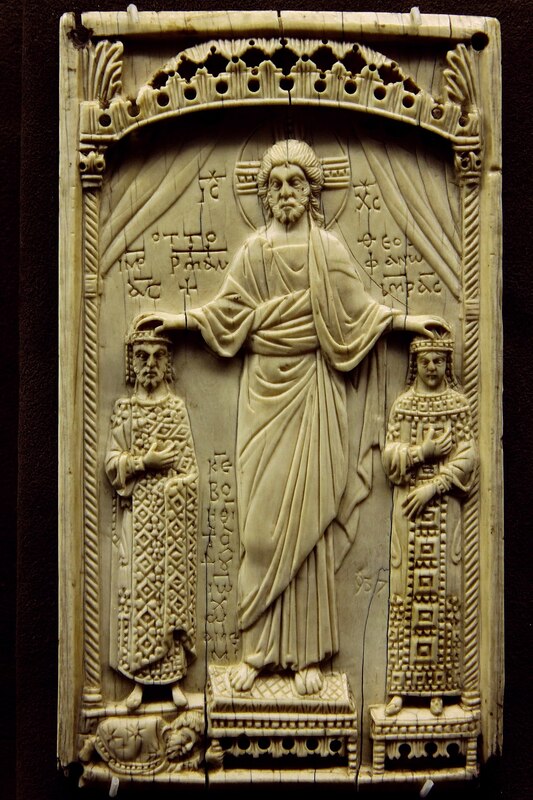Otto II and Theophanu ivory
Type:
Plaques
Date:
ca. 982
Medium:
Ivory
Dimensions:
H. 18.5cm × 10.6 × 0.85 cm
Description:
This ivory plaque depicts Christ crowning or blessing the German ruler Otto II and his wife, Theophanu, a niece of the Byzantine emperor, whom he married in 972 when she was twelve. The next year Otto was crowned emperor in Rome (r. 973–83), and Theophanu became empress (d. 991). Their son, Otto III, ruled after his father. The imperial couple are both shown in Byzantine garments, including crowns with prependoulia; Theophanu wears a loros.
Below Otto, a diminutive figure in full proskynesis is identified in the inscription between Christ and Otto as John, a monk, who asks Christ for help. He is probably John Philagathos, from Byzantine southern Italy. He must have been the patron of this flattering wedding gift, which proved to be effective: Philagathos later became tutor to Otto III and archbishop of Piacenza. The inscriptions that identify the figures are in Greek, but mixed with Latin letters, which suggests that the ivory was carved in Italy or Germany rather than Byzantium. Nevertheless, the artist closely copied a Byzantine model, such as the ivory of Romanos II and Eudokia from earlier in the tenth century. Theophanu probably carried a similar ivory plaque with her when she traveled west as a diplomatic bride. She also brought such Byzantine customs as frequent bathing, silk garments, and, in all likelihood, forks.
Below Otto, a diminutive figure in full proskynesis is identified in the inscription between Christ and Otto as John, a monk, who asks Christ for help. He is probably John Philagathos, from Byzantine southern Italy. He must have been the patron of this flattering wedding gift, which proved to be effective: Philagathos later became tutor to Otto III and archbishop of Piacenza. The inscriptions that identify the figures are in Greek, but mixed with Latin letters, which suggests that the ivory was carved in Italy or Germany rather than Byzantium. Nevertheless, the artist closely copied a Byzantine model, such as the ivory of Romanos II and Eudokia from earlier in the tenth century. Theophanu probably carried a similar ivory plaque with her when she traveled west as a diplomatic bride. She also brought such Byzantine customs as frequent bathing, silk garments, and, in all likelihood, forks.
Relevant Textbook Chapter(s):
6
Repository and Online Resources:
• Musée national du Moyen Âge, Thermes de Cluny, Cl. 392
• See details of the ivory on the Kornbluth Photography website.
Image Credits:
Wikimedia Commons
